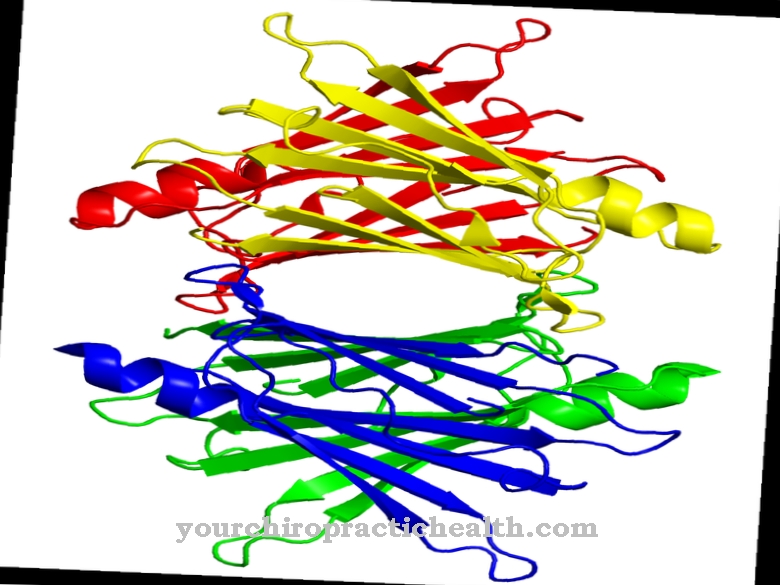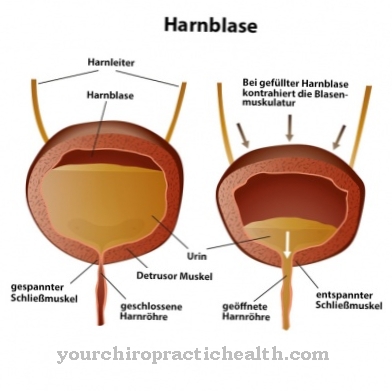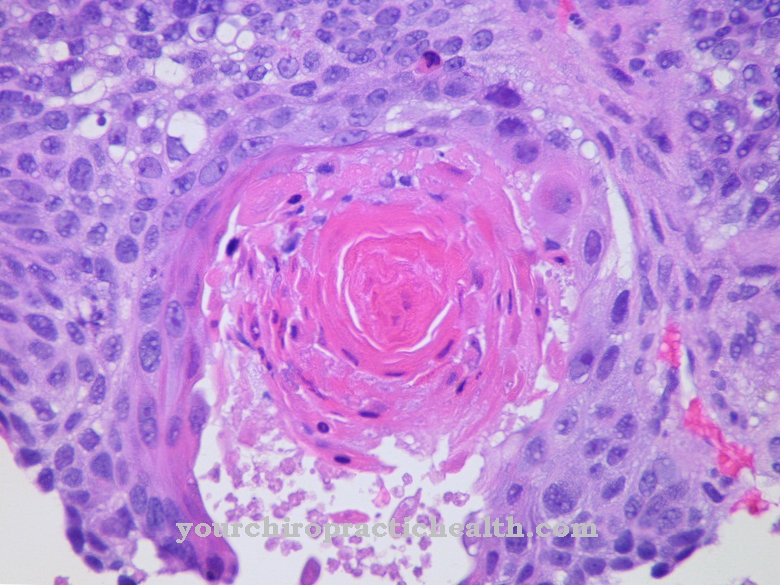Of the Precentral gyrus is part of the brain and is home to the primary motor cortex, which is networked with central motor neurons and the pyramidal tracts. The area of the brain is the center of movement control. With lesions, irreversible movement disorders, spasticity or paralysis often occur.
What is the Precentral Gyrus?
The precentral gyrus lies on the frontal lobe in the cerebrum and corresponds to the cerebral segment in front of the central groove. Literally translated, gyrus means "curl". In humans, the precentral gyrus has a central function in controlling movement. The primary motor cortex, which is irreplaceable for all movements, lies in the coil.
According to the Brodmann classification, the presentral gyrus is located in area four, which is also known as the gigantopyramidal area. This area is the origin of the so-called pyramid tracks. The human pyramidal tracts are the central switching element for all voluntary and reflex motor skills and are connected to the motor cranial nerve nuclei. The primary motor cortex thus contains so-called motor neurons, which are considered the common starting point for the entire motocortex. The precentral gyrus must be distinguished from the postcentral gyrus on the parietal lobe. The somatosensory cortex for processing tactile perceptions is located in this area.
Anatomy & structure
The motor neurons, which serve as the common starting point of the motor cortex, are located in the primary motor cortex. The axons of the local motor neurons run along the spinal cord and reach the motor nerve nuclei there.
Its impulses are switched in the spinal cord and travel to the peripheral motor neuron in the anterior horn, from where motor commands from the brain reach the associated voluntary muscles. The primary motor cortex is not complete, but for the most part it is located on the bulge immediately in front of the central furrow. The precentral gyrus is built up in this part with somatotopia. Anatomically adjacent regions are also represented next to one another in the primary motor cortex. Thus, on the presentral gyrus there is, so to speak, a scaled down and inverted representation of the human body.
Function & tasks
The main task of the precentral gyrus corresponds to its function as primary motor cortex. The primary motor cortex is to be distinguished from the supplementary motor cortex and the premotor cortex. The last two cortices are used to compile sequences of movements from a fund of learned individual movements. In addition, they are involved in the preparation of all voluntary conscious and unconscious movements. Korbinian Brodmann introduced the so-called Brodmann areas to describe sections of the brain.
The primary motor cortex makes up Brodmann Area 4. The supplementary motor and premotor cortex are both located in area 6. This representation of the human body in the precentral gyrus is also known as the homunculus and is used for the precise transmission of movement commands from the brain. The homunculus is proportionally distorted. Individual areas of the human body have an extremely finely tuned ability to move, especially the hand or the speech muscles. These areas require a particularly fine representation. Other areas of the body, on the other hand, have less fine motor skills, for example the back. Areas with a higher proportion of automatic regulation also have to be represented less precisely.
An example of this is the holding and support muscles. The cortex areas belonging to such areas are smaller than the representative areas for fine motor skills. This is how the distortion of the homunculus arises. The somatotopia is also much more pronounced in the representation than, for example, in the primarily sensory cortex, which corresponds to a precise representation of body surfaces. The efferent descending nerve tracts of the cerebral cortex together with the corticospinal tract and the corticonuclear tract to supply the motor cranial nerve nuclei form the human pyramidal tract.
You can find your medication here
➔ Medicines for muscle crampsDiseases
The precentral gyrus gains clinical relevance above all when it is affected by lesions. The motor areas create a central interface between consciousness and matter. Only through the areas are people able to react to their environment with specific intentions and in directed movements, to move around in the environment or to approach other individuals.
When the motocortex completely loses its function, voluntary movements are no longer conceivable and control over one's own body is completely lost. Locked-in syndrome is used to describe patients in this position. Those affected are fully conscious and clearly perceive their environment, but they cannot react to their environment and are accordingly enclosed in their own body. The locked-in syndrome is usually a result of damage to the efferent tracts on the motor cortex. Other lesions of the primary motor cortex can also be associated with severe movement restrictions. For example, patients with ALS are affected by degenerative changes in motor neurons.
Your motor nerve cells in the central nervous system break down piece by piece. Depending on whether the upper or lower central motor neuron is affected, the degenerative symptoms result in spasticity, muscle weakness or paralysis. The disease has so far been incurable and can only be treated symptomatically. The neurologist often uses reflex examinations to diagnose lesions of the central motor neurons and thus the primary motor cortex. For example, if there are multiple pathological reflexes of the so-called Babinski group, then the patient is likely to have lesions in this area.
Tumors, bleeding, traumatic injuries or inflammation in the area of the precentral gyrus often cause movement disorders. The prognosis for treatment depends on the cause in each individual case. When motor neurons have been irreversibly destroyed, the movement disorders are usually irreversible symptoms. The functions of the affected brain areas can only be transferred to intact brain areas through training in individual cases.



























